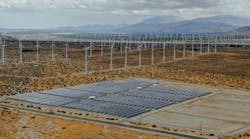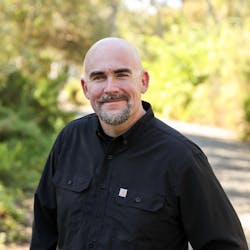It is no secret California state lawmakers and leaders are pioneers when it comes to enacting policies to help realize a better future for their citizens as well as lead by example for the rest of the nation and world. For California utilities, answering this call to action is no easy feat. Before drafting and setting into motion any grand plans, they must conduct an expert analysis to know where they need to be before the goal date of 2045.
No greater example exists of this type of in-depth analysis and future projections than that of Edison International’s Countdown to 2045 white paper, published in September 2023. This paper is a follow-up to Southern California Edison's (SCE’s) 2019 analysis, titled Pathway 2045, and considers policy adjustments, climate influences, market and technological advancements, and a reliability analysis of the electric sector. It provides an understanding of how increased electrification — fed by clean generation and made available by great expansion of the electric grid — is required to meet the decarbonization goals while upholding grid reliability and customer affordability.
According to Countdown to 2045, three times the current capacity of utility-scale clean energy resources will exist by 2045, primarily derived from new solar, wind and energy storage projects. In this future scenario, 90% of vehicles and 95% of buildings will rely on electricity, leading to an 80% surge in electricity demand. Achieving this transformation calls for immediate and fundamental changes in how the state plans and operates its entire energy infrastructure. State agencies and utilities must accelerate grid expansion, incorporating new transmission and distribution grid projects at rates up to four times and 10 times their historical averages, respectively.
To meet California's ambitious objectives, utilities must explore a range of possibilities, including greater integration of emerging technologies like carbon capture, to identify the most practical solutions. A similar overhaul is essential on a global scale to meaningfully curb climate change by reducing greenhouse gas emissions. These investments will not only contribute to cleaner air but also open avenues for economic growth. While electricity bills may increase, the savings from reduced fossil fuel expenses are expected to more than compensate for them.
Expected Increases
According to Edison International’s analysis, applying the projected scale-up to the SCE service territory means projected load growth requires a significant acceleration in grid expansion. Over the next 10 years, the California Public Utility Commission’s integrated resource plan aims to add 7 GW/year, which will drive the California Independent System Operator’s (CAISO’s) planning for transmission expansion. In the following decade, the pace of capacity expansion must increase to about 8 GW/year, on average, until 2045. California’s transmission system build-out must keep pace with system-wide resource capacity growth.
Today, CAISO has 26,000 transmission circuit miles. To interconnect 120 GW of new resources, tripling bulk resource capacity, at least 20,000 circuit miles of 500-kV transmission must be added. Deployment will need an investment of about US$75 billion to interconnect CAISO resources, import out-of-state resources and bolster the sub-transmission grid. Providing electricity customers with 80% more energy in 2045 also requires the distribution system to expand significantly while simultaneously increasing the throughput and average use of the thousands of circuits already in use today.
The equivalent of 85 new distribution substations will be needed. Also, 350 of SCE’s approximately 900 existing substations will need to be upgraded to expand their capacity. More than 1400 new distribution circuits will be required, which is about 30% more circuits than SCE has in operation today.
Readying The Front Line
Given this upcoming increased workflow culminating to 2045, what are some of the top considerations now to prepare for this unprecedented growth? For starters, system growth is not possible without equipment and materials, and lead times are greatly increasing for essential components such as high-voltage transformers and circuit breakers. For instance, reports of lead times for new high-voltage circuit breakers extending out from three years to an unprecedented five years from the date of purchase order issuance, and transformers are following suit. This requires system planning organizations to move quickly and efficiently from forecasted needs to actual project plans, with material orders placed decisively in record time.
Utilities can benefit from greater supplier diversity. They must start by updating their design standards and specifications to provide more material options for engineering and procurement teams to work with going forward. Often, a top limitation is material availability, an unnecessary constraint that can be relieved by updating asset engineering standards, diversifying the list of available material and design options, and simply by trying out new equipment and new suppliers.
As far as resource and workforce planning, services will be in high demand starting from initial project design and engineering on to frontline field crews, both internal and contractors. Developing and growing contract workforces will be key as internal and external resource limitations highlight bottlenecks that can quickly be solved for by the contract option, provided new contractor resources are located and prequalified. A most valuable consideration here is to maintain an effective competitive bid process that provides healthy market competition and keeps project affordability front and center during the procurement process.
Impacts To Other Utilities
Regardless of a state’s political environment, there is no denying that transportation and other markets U.S. wide will become electrified. The only question is: Which states will rise to the challenge and provide the improved electric networks required to reliably support this increasingly diverse electric load and supplies? The state of California, Edison International and SCE are up to the task.
Editor’s note: Edison International’s Countdown to 2045 white paper is available at www.edison.com/our-perspective/countown-to-2045.
Mark Christensen ([email protected]) is a regular contributor to T&D World, and is substation apparatus and maintenance manager at SCE.



